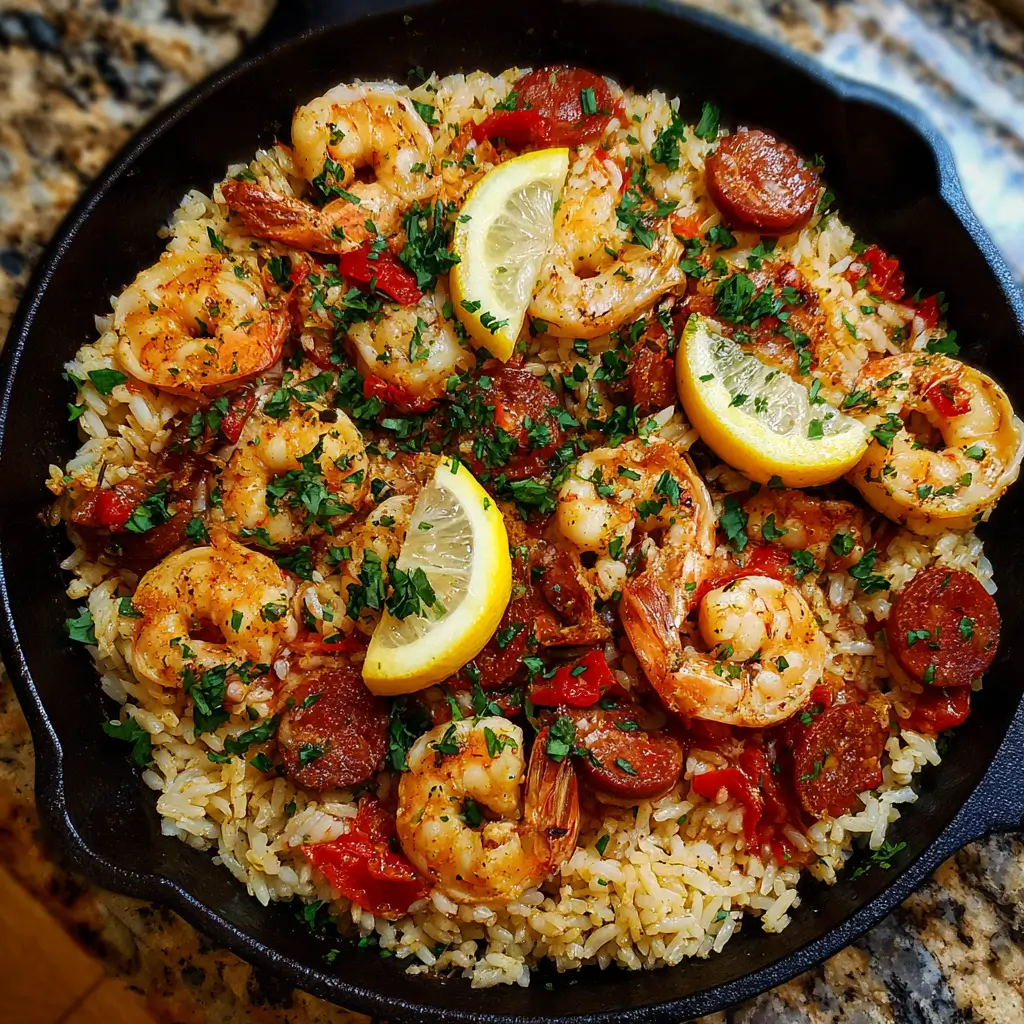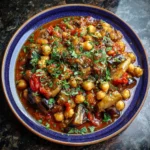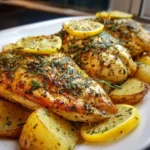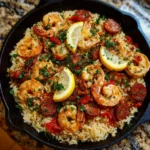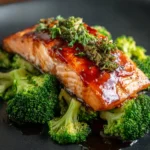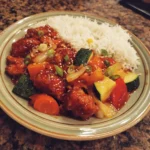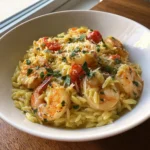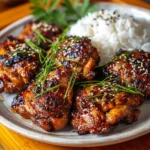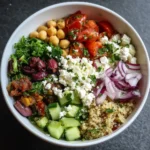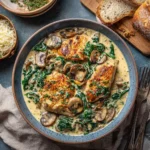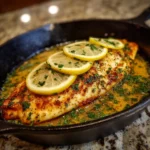Introduction
Welcome to a delicious and satisfying meal that brings the bold flavors of Louisiana straight to your kitchen—Cajun Shrimp and Rice Skillet. This one-pan wonder is not only incredibly flavorful but also quick and easy to prepare, making it perfect for busy weeknights or cozy weekend dinners. Combining succulent shrimp, aromatic vegetables, seasoned spices, and fluffy rice, this dish delivers a hearty, comforting experience with every bite. Whether you’re a fan of Southern cuisine or just looking for a new go-to recipe, Cajun Shrimp and Rice Skillet will quickly become a family favorite.
The History
Cajun cuisine traces its roots back to the Acadian people—French settlers who were expelled from Nova Scotia (then known as Acadia) by the British in the mid-18th century. These displaced families eventually settled in the swamps and bayous of southern Louisiana, where they adapted their traditional French cooking techniques to the local ingredients and cultures around them. Over time, this fusion evolved into what we now know as Cajun food—a rustic, hearty style defined by bold seasonings, slow-cooked meats, and rich, complex flavor profiles.
Shrimp has long been a staple in coastal Louisiana due to the abundance of fresh seafood in the Gulf of Mexico. When combined with rice, vegetables, and the famous “Holy Trinity” of onions, bell peppers, and celery, dishes like this skillet became common household meals. The use of Cajun seasoning—a blend typically including paprika, garlic powder, onion powder, cayenne pepper, oregano, and thyme—adds heat and depth, reflecting the region’s love for spicy, robust flavors. Today, Cajun Shrimp and Rice Skillet honors this heritage while being accessible and convenient for home cooks everywhere.
Ingredients Breakdown
The magic of this dish lies in its carefully balanced ingredients, each contributing to the overall richness and complexity of flavor:
- Shrimp: Large, peeled, and deveined shrimp cook quickly and absorb the savory sauce beautifully. Opt for wild-caught Gulf shrimp if possible for superior taste and texture.
- Rice: Long-grain white rice works best here, as it holds its shape well and soaks up the flavorful liquid without becoming mushy. You can substitute with brown rice, though it may require additional cooking time and liquid.
- Holy Trinity: A cornerstone of Cajun cooking, this trio of diced onions, green bell peppers, and celery forms the aromatic base of the dish.
- Garlic: Freshly minced garlic adds pungency and depth, enhancing the overall savoriness.
- Chicken Broth: Provides moisture and a savory backbone for the rice to cook in. For a richer flavor, use homemade broth or enhance store-bought with a splash of fish stock.
- Diced Tomatoes: Canned fire-roasted tomatoes add acidity, sweetness, and body to the sauce, helping to balance the heat from the spices.
- Cajun Seasoning: The heart of the dish. You can use a high-quality store-bought blend or make your own using paprika, garlic powder, onion powder, cayenne, black pepper, dried oregano, and thyme.
- Butter and Olive Oil: A combination of both adds richness and helps sauté the vegetables evenly without burning.
- Optional Add-ins: Andouille sausage, smoked paprika, hot sauce, Worcestershire sauce, or fresh parsley for garnish can elevate the dish further.
Step-by-Step Recipe
- Prep Ingredients: Peel and devein the shrimp, pat dry, and set aside. Dice the onion, bell pepper, and celery uniformly to ensure even cooking. Mince the garlic.
- Sauté Vegetables: In a large oven-safe skillet or Dutch oven, heat 1 tablespoon of olive oil and 1 tablespoon of butter over medium heat. Add the onions, bell peppers, and celery. Cook for 5–7 minutes until softened and fragrant.
- Add Garlic and Seasoning: Stir in the minced garlic and 2–3 tablespoons of Cajun seasoning (adjust to taste). Cook for 1 minute to release the essential oils and toast the spices slightly.
- Incorporate Rice: Add 1 cup of uncooked long-grain white rice to the skillet. Stir constantly for 2–3 minutes to lightly toast the grains, which enhances nuttiness and prevents clumping.
- Pour Liquids: Carefully pour in 2 cups of chicken broth and 1 cup of diced tomatoes (with juice). Stir well to combine, scraping any browned bits from the bottom of the pan for extra flavor.
- Simmer Rice: Bring the mixture to a boil, then reduce heat to low. Cover the skillet with a tight-fitting lid and simmer for 15–18 minutes, or until the rice is tender and most of the liquid is absorbed.
- Add Shrimp: Nestle the raw shrimp into the rice, pushing them gently into the sauce. Sprinkle with salt and a pinch of cayenne if desired. Cover again and cook for 5–7 minutes more, until the shrimp turn pink and opaque.
- Finish and Rest: Remove from heat. Stir in 1 tablespoon of butter and fresh chopped parsley. Let the skillet rest, covered, for 5 minutes to allow flavors to meld and rice to finish steaming.
- Serve: Fluff gently with a fork, adjust seasoning if needed, and serve hot with lemon wedges and hot sauce on the side.
Tips
- Toasting the Rice: Don’t skip toasting the rice with the vegetables and spices—it builds a deeper flavor foundation.
- Don’t Overcook Shrimp: Shrimp cook very quickly. Adding them toward the end ensures they remain tender and juicy. If cooked too long, they become rubbery.
- Liquid Ratio: The standard ratio is 2:1 (liquid to rice), but depending on your pan and stove, you might need an extra 1/4 cup of broth if the rice seems dry.
- Use a Tight-Fitting Lid: Prevents steam from escaping, which is crucial for proper rice cooking.
- Resting Time: Allowing the dish to sit off the heat for 5 minutes helps the rice absorb remaining moisture and results in a fluffier texture.
- Frozen Shrimp? Thaw completely in cold water and pat dry before using to avoid excess moisture.
- Make Ahead: You can prep the vegetables and mix the seasoning ahead of time. However, assemble and cook just before serving for best results.
Variations and Customizations
This versatile recipe welcomes creativity and dietary preferences. Here are some popular twists:
- Andouille Sausage Addition: Brown 1/2 pound of sliced Andouille sausage before adding the vegetables for a smoky, meaty depth.
- Seafood Medley: Replace shrimp with scallops, crab, or crawfish tails for a luxurious variation.
- Vegan/Vegetarian Version: Omit shrimp, use vegetable broth, and substitute mushrooms or tofu for protein. Add smoked paprika for a similar depth.
- Spice Level Control: Reduce or omit cayenne in the seasoning for mild heat, or add sliced jalapeños and a dash of hot sauce for extra kick.
- Different Rice Types: Try jasmine or basmati rice for floral notes, or use converted rice for foolproof results. For a healthier option, use quinoa or cauliflower rice (add at the end).
- Creamy Version: Stir in 1/4 cup of heavy cream or coconut milk at the end for a luscious, creamy texture.
- Oven Method: After bringing to a boil, transfer the skillet to a 375°F oven, cover with foil, and bake for 20 minutes. Then add shrimp and return for 10 minutes.
- With Greens: Fold in chopped spinach, kale, or collard greens during the last few minutes of cooking for added nutrition.
Health Considerations and Nutritional Value
Cajun Shrimp and Rice Skillet can be both nutritious and balanced when prepared mindfully:
- Shrimp: Low in calories and fat, high in protein, selenium, and omega-3 fatty acids. It supports heart and brain health.
- Rice: Provides carbohydrates for energy. White rice is easier to digest; brown rice offers more fiber and nutrients.
- Vegetables: Onions, peppers, and celery contribute vitamins A and C, antioxidants, and dietary fiber.
- Fats: Using olive oil provides heart-healthy monounsaturated fats. Limit butter or use a light spread to reduce saturated fat.
- Sodium: Store-bought broths and Cajun seasoning can be high in sodium. Use low-sodium versions and make your own spice blend to control salt content.
- Portion Control: Serve with a side salad or steamed veggies to increase volume without excess calories.
- Allergens: Contains shellfish (shrimp) and possibly gluten (check seasoning labels). Always verify ingredient sources for allergies.
Approximate Nutritional Values (per serving, serves 4):
Calories: 380 | Protein: 28g | Carbohydrates: 45g | Fiber: 3g | Fat: 10g | Saturated Fat: 3g | Sodium: 800mg (varies based on seasoning and broth)
Ingredients
- 1 lb (450g) large shrimp, peeled and deveined
- 1 cup long-grain white rice (or parboiled rice)
- 1 tbsp olive oil
- 2 tbsp butter, divided
- 1 medium yellow onion, diced
- 1 green bell pepper, diced
- 2 stalks celery, diced
- 3 cloves garlic, minced
- 2 cups chicken broth (low-sodium preferred)
- 1 cup canned diced tomatoes, with juice
- 2–3 tbsp Cajun seasoning (homemade or store-bought)
- Salt and freshly ground black pepper, to taste
- 1/4 tsp cayenne pepper (optional, for extra heat)
- 2 tbsp fresh parsley, chopped (plus extra for garnish)
- Lemon wedges, for serving
- Hot sauce (like Crystal or Tabasco), optional
Directions
- In a large skillet or Dutch oven, heat olive oil and 1 tablespoon of butter over medium heat.
- Add onion, bell pepper, and celery. Sauté for 6–7 minutes until softened and lightly golden.
- Stir in garlic and Cajun seasoning. Cook for 1 minute until fragrant.
- Add rice and stir to coat with oil and spices. Toast for 2–3 minutes, stirring frequently.
- Pour in chicken broth and diced tomatoes. Season with salt, black pepper, and cayenne if using. Stir well and bring to a boil.
- Reduce heat to low, cover with a tight-fitting lid, and simmer for 15 minutes.
- Arrange shrimp evenly over the rice. Cover and cook for 5–7 minutes more, until shrimp are pink and cooked through.
- Remove from heat. Stir in remaining 1 tablespoon of butter and fresh parsley. Let stand covered for 5 minutes.
- Fluff with a fork, taste, and adjust seasoning if needed.
- Serve hot with lemon wedges, extra parsley, and hot sauce on the side.
FAQ
Can I use frozen shrimp?
Yes, but make sure to thaw them completely in cold water and pat dry before adding to avoid excess moisture and uneven cooking.
What is the best type of rice for this recipe?
Long-grain white rice works best due to its firm texture and ability to absorb flavors. Avoid instant or sticky rice varieties.
Can I make this ahead of time?
While best served fresh, you can prep ingredients in advance. Cooked leftovers keep well in the fridge for up to 3 days. Reheat gently with a splash of broth to restore moisture.
Is Cajun seasoning very spicy?
It depends on the brand or recipe. Traditional blends range from mild to hot. Adjust the amount or omit cayenne to suit your taste.
Can I cook this in a rice cooker?
Absolutely! Sauté vegetables separately, then add all ingredients (except shrimp) to the rice cooker. After the cycle finishes, add shrimp, close the lid, and let steam for 10 minutes until shrimp are done.
What can I serve with Cajun Shrimp and Rice Skillet?
Great pairings include a crisp green salad, garlic bread, coleslaw, or grilled corn on the cob. A chilled white wine like Sauvignon Blanc complements the spice well.
Can I freeze this dish?
Freezing is not recommended, especially with shrimp, as the texture deteriorates upon thawing. The rice may also become gummy.
Summary
Cajun Shrimp and Rice Skillet is a vibrant, one-pan meal bursting with Southern charm, featuring tender shrimp, fluffy rice, and a medley of seasoned vegetables in a savory, spiced tomato broth.
Quick to prepare, deeply flavorful, and endlessly customizable, it’s a perfect comfort dish that brings the spirit of Louisiana to your dinner table in under 30 minutes.
